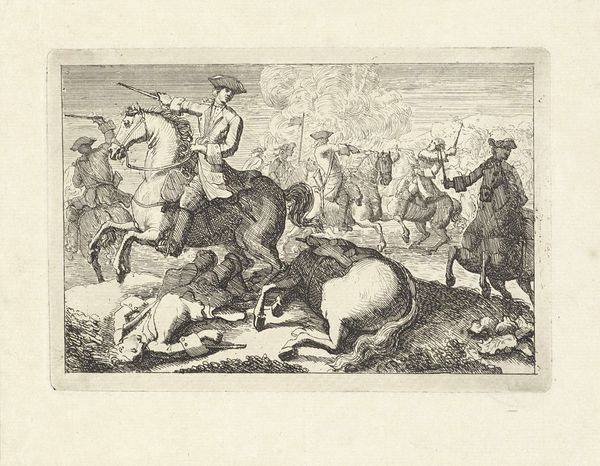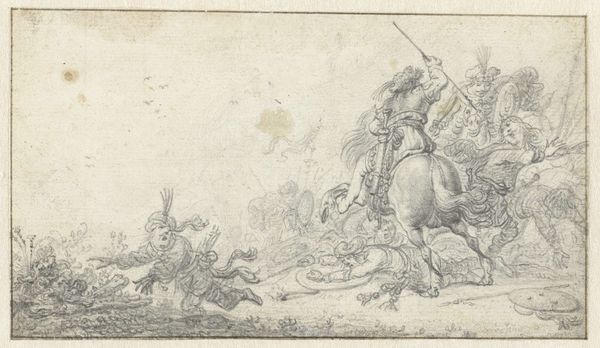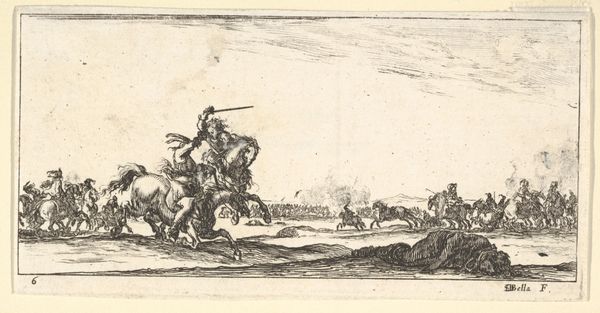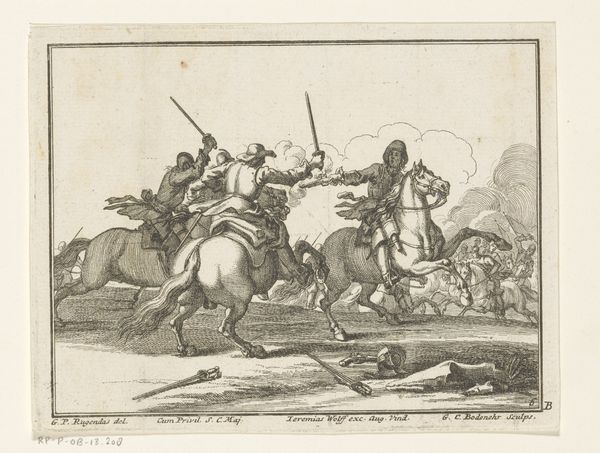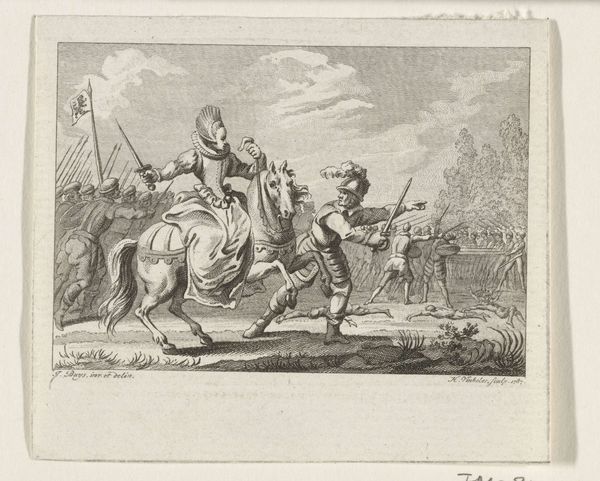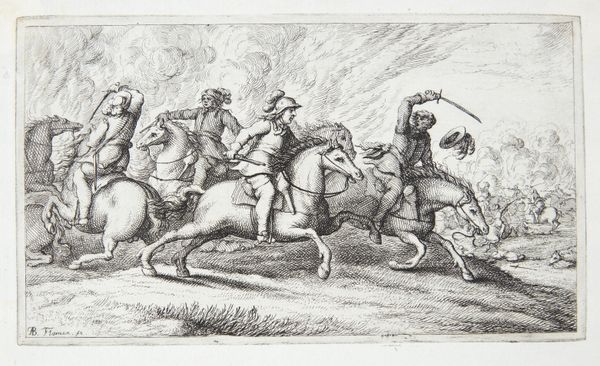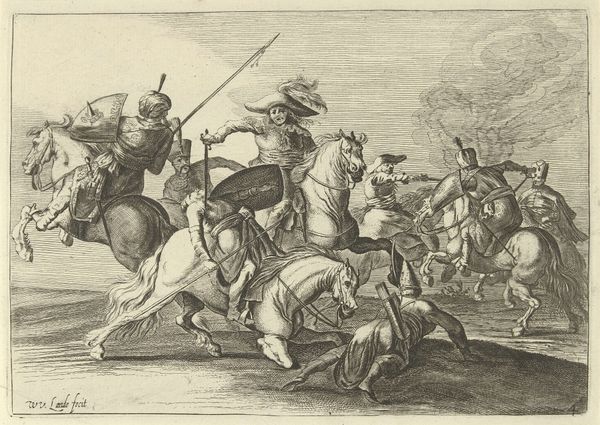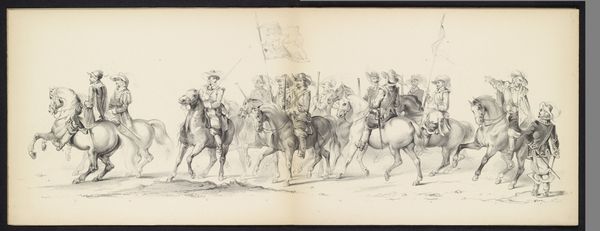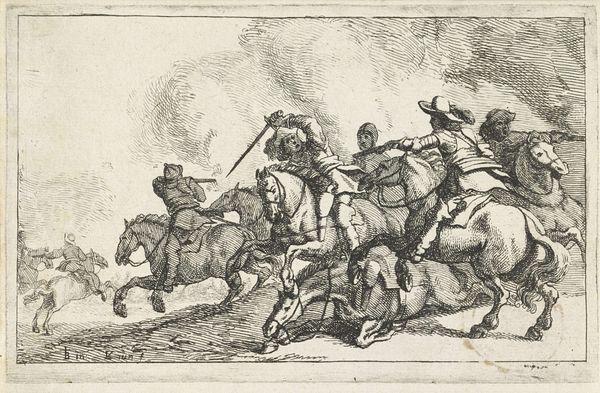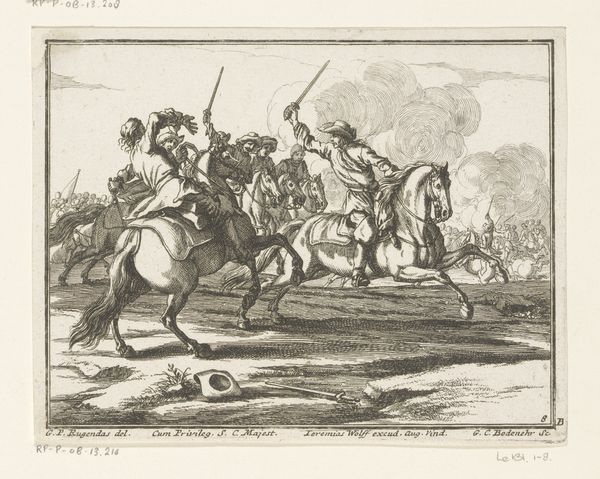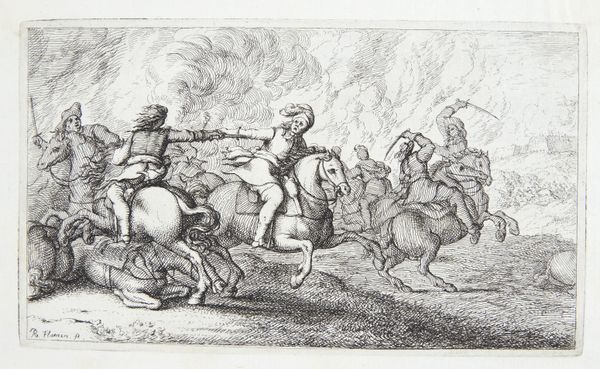
Dimensions: height 41 mm, width 140 mm
Copyright: Rijks Museum: Open Domain
Editor: We're looking at "Schermutseling te paard," or "Skirmish on Horseback," an engraving by Daniel Nikolaus Chodowiecki, made in 1771. It's currently held at the Rijksmuseum. The linear quality and composition gives it a real sense of energy, doesn't it? What jumps out at you? Curator: Indeed. Observe how the dynamism is not solely dependent on the subject. Note the strategic employment of line weights. The artist uses denser, darker lines to define the foreground figures, creating a clear visual hierarchy and emphasizing their immediacy, while the background recedes with lighter strokes. Editor: So it's not just *what* is depicted but *how* it's depicted. Can you say more? Curator: Precisely. Consider the treatment of space. Chodowiecki masterfully creates depth through subtle variations in line density and the overlapping of forms, avoiding traditional shading techniques. Ask yourself, does the flat plane recede, or is it built toward the eye? Is it a representation, or an architectural construction of one? Editor: That's a fascinating way to consider the space! The horses also look so alive despite being created only with these fine lines. Curator: Examine how the articulation of their musculature is achieved through a network of carefully placed lines. Note how the suggestion of movement is conveyed. It's a study in how minimal means can yield maximum effect. Editor: I see it now, that reduction and emphasis is powerful! I guess, paying attention to the how gives just as much meaning as paying attention to the what. Curator: Precisely. An appreciation for artistic ingenuity and the language of form can open an artwork for deeper interpretation.
Comments
No comments
Be the first to comment and join the conversation on the ultimate creative platform.
